Nature's Change of Heart: Why Tropical Rainforests are Against Us Now

You reap what you sow.
is a phrase derived from Biblical origin which means whatever someone does he/she have to eventually face the consequences of his/her own actions.
It seems that no matter how we increase our awareness in the issue of climate change it just keeps on getting more complex. We've figured out the trends and we have drawn the tables but every time we find solutions more problems are sticking out.
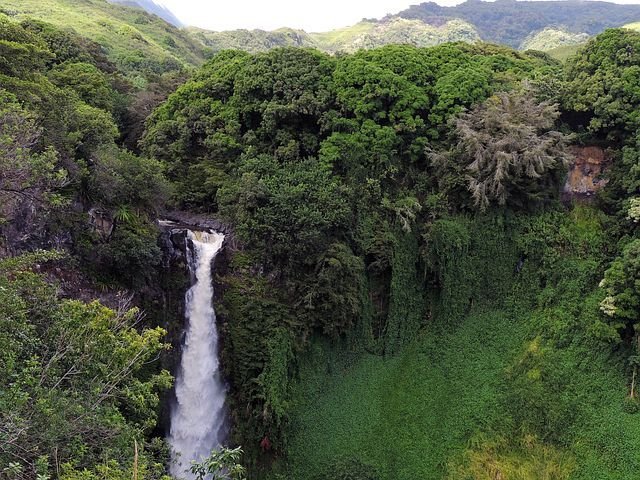
In this article we'll be tackling a 'sub-issue' that is very much related to climate change/global warming. It is about the reversal of roles of the earth's 'carbon sinks'. To be specific we'll be discussing about the reversal of one of the largest natural 'carbon sinks' in the planet, the tropical rainforests.
Our main objective is to answer/explain the following questions before the end of this article:
- Why carbon dioxide is the main culprit in climate change?(Long refresher course)
- What are 'carbon sinks' and their relation with CO2 gas in our atmosphere? What are the types of 'carbon sinks'?
- Why do rainforests are against us now? How can we fix this?
Why carbon dioxide is the main culprit in the issue of climate change, not methane, not nitrous oxide but CO2?
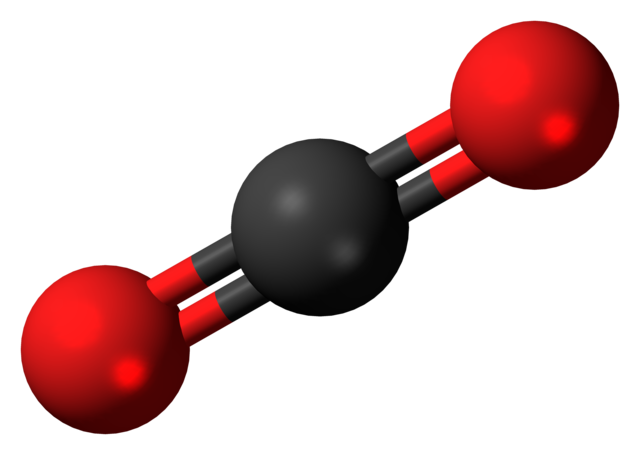
A CO2 molecule
Carbon Dioxide is not the most abundant green house gas (it's 2nd to water vapor) nor it is the gas with the highest heat trapping property as it falls behind the molecule per molecule heating value of N2O and methane.
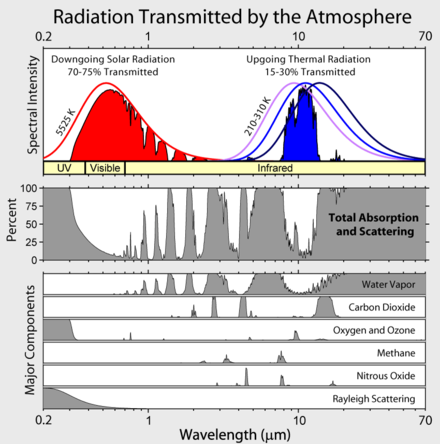
Atmospheric Transmission Properties of GHG's
The Intergovernmental Panel on Climate Change(IPCC) released a statement pointing at CO2 as the greenhouse gas(GHG) with the highest positive Radiative Forcing (RF) value.
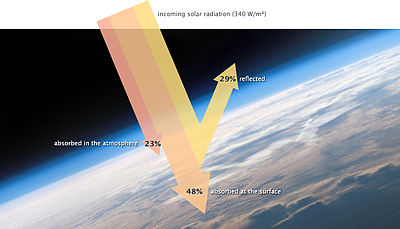
According to the Panel,
"Radiative forcing is a measure of the influence a factor has in altering the balance of incoming and outgoing energy in the Earth-atmosphere system and is an index of the importance of the factor as a potential climate change mechanism. In this report radiative forcing values are for changes relative to preindustrial conditions defined at 1750 and are expressed in Watts per square meter (W/m2)."
To make it short RF is the 'measure of change of energy per unit area of the globe'.
Radiative forcing is use to compute for the change of the surface temperature which is given by the formula,
ΔTs= λ x ΔF
Where:
ΔTs is the change in equilibrium of the surface temp
λ is the climate sensitivity (K/(W/m2))
Climate sensitivity often has a value of 0.8 K/(W/m2)
ΔF is the radiative forcing (W/m2)
The value of RF(ΔF) varies with the GHG. The reason for this is because ΔF is function of changing concentration. For CO2 its logarithmic, square for CH4 and NO2 and linear for chlorofluorocarbon(CFC). The coefficients for each can be found here.
The given formula for Radiated forcing of CO2 is,
ΔF= 5.35ln(C/C0) W/m^2
Where:
C is the concentration in ppm (parts per million)
C0 is the initial concentration in ppm
For a more comprehensive discussion we'll be computing for radiative forcing value of CO2 using two different methods one is calculated by transfer code Modtran and the other one is by using the given formula above. Please refer to the graph below.
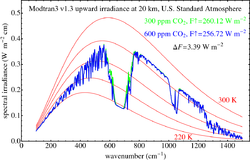
There is already a value for Radiated forcing because it was already calculated by transfer code Modtran. The method of solving is very similar to 'point-to-point' calculation. At 300 ppm(C0) the Radiated forcing is at 260.12 W/m2 while at 600 ppm(C) the Radiated forcing is at 256.72 W/m2. To get the ΔF value we just need to subtract the final value of 256.72 W/m2 from the initial which is 260.12 W/m2. We will get ΔF=3.39 W/m2. The advantage of using this method is if you have the raw data, you only need to point out a ppm value and get the Radiative forcing at that point then compare it to the initial Radiated forcing measured at the initial ppm point.
Now we use the formula earlier which is,
ΔF= 5.35ln(C/C0) W/m^2
By direct substitution we have
ΔF= 5.35 ln(600/300)
ΔF= 5.35 ln2
ΔF= 5.35(0.6931471805)
ΔF= 3.708337416 W/m2
Using this value we solve for ΔTs
ΔTs= λ x ΔF
ΔTs= 0.8 x 3.708337416 K
ΔTs= 2.9666699328 K
ΔTs= 3 K
This means that by doubling(600ppm/300ppm) the CO2 amount we gain a warming value of 3K
RF values could be positive or negative. Positive if it contributes to warming and negative if it contributes to cooling. CO2 might not be the most abundant GHG but the volume of CO2 present in the atmosphere is greater than the combined volume of other GHG(except water vapor) and together with its heat trapping property which greatly outpaced water vapor it became the GHG with the highest RF value. Below is a table for additional reference.
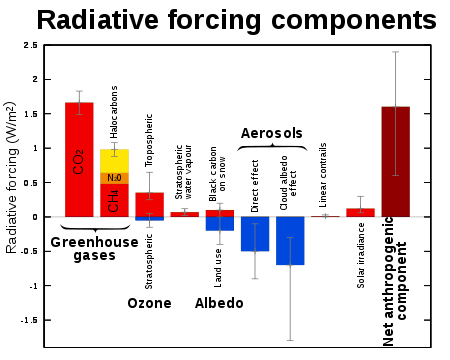
Radiative forcings, IPCC 2007
Another reason why CO2 contributes most in climate change is because of the span of time it stays in the atmosphere or as the researchers say, the time it 'sticks around'.
It takes around ten years for methane(CH4) to leave the atmosphere(it converts to CO2 afterwards) and a century for nitrous oxide(N2O).
When CO2 is released from a source, 40% will remain in the atmosphere for 100 years, 20% will reside for 1000 years and the final 10% will take 10000 years to turn over
Data Source: IPCC.ch
In other words it takes 4 human generations for 40% of CO2 to leave the atmosphere, 40 human generations for the next 20% and 400 human generations for the last 10%. Do you know what this data tells us? It tells us that every time we use our cars, electric appliances and even grill our favorite meat, we are unconsciously preparing a booby trap inheritance for our children, grandchildren and the other future generations.
Carbon Sinks and their Relation with CO2 capture
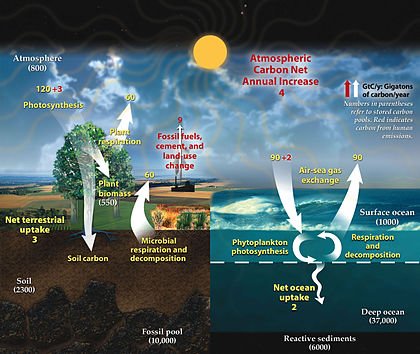
The Carbon Cycle
Carbon sinks are reservoirs that serve as storehouses for carbon containing compounds. A carbon sink can be called a carbon sink if and only if it could store/capture more carbon than it can release. The process by which carbon sinks capture CO2 from the atmosphere and store it as carbon compounds is called carbon sequestration.
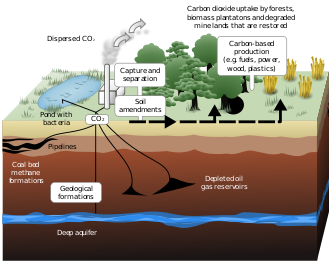
Carbon sequestration of emmissions from a coal-fired plant
Carbon sinks fall under 2 categories: natural and artificial. Natural carbon sinks include rainforests and oceans while artificial carbon sinks include landfills and other artificial carbon storage systems. The main difference between a natural and artificial carbon sinks is the amount of carbon compounds they can hold. Natural carbon sinks like tropical rainforests hold monstrous amount of carbon containing compounds which is far greater than those of artificial reservoirs.
How do carbon sinks capture carbon?
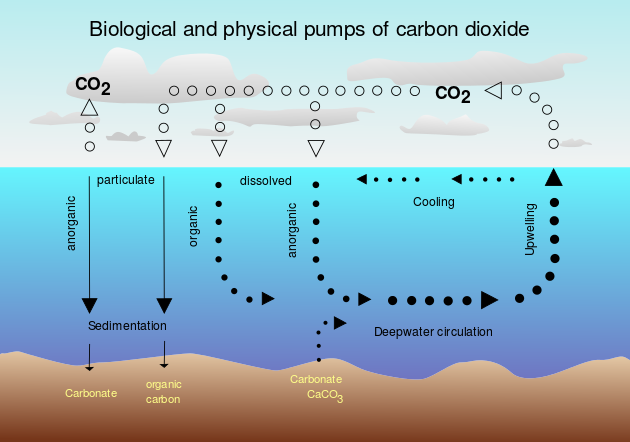
The figure above shows the Air-sea exchange of CO2. The CO2 in the air is captured by the sea, portion of it escapes before capturing. A portion is then transformed into inorganic compounds like carbonates and another portion into organic compounds. Some of these portions settle at bottom of the sea by the process of sedimentation, some mix with the seawater. Some sediments(organic+inorganic) will be broken down by pressure or other natural forces underwater and joins with the other portion that is already mixed with the sea. These nutrient rich compounds will then be brought above the surface by the process of upwelling. Some of these compounds will be broken down by sunlight which will transform them as CO2 and other gases. And some will serve as nourishments to organisms which will then later emit CO2 as a by product. And the cycle will repeat over again.
The carbon cycle that happens in seas and oceans is also analogous to carbon cycle flows that happen in other natural carbon sinks like the rainforests. The only difference is that the CO2 is usually captured by plants for photosynthesis and the other portions are mixed with the earth to form nutrient-rich compounds and soil types like humus, instead of transforming it into sediments. Of course the absolute similarity of both Carbon sinks and their cycles is that the carbon dioxide stored as carbon compounds is much greater than the CO2 they release.
Why are Rainforests Against us Now?
A carbon sink captures and stores more CO2 than what it could release, but what if the reverse process happened? What if it releases more than it could store? That's obviously a problem and that is also the lead to answer the question,'why the rainforests are against us now'.

According to a study led by a team of researchers from Wood Hole Research Center(WHRC) and Boston University because of widespread deforestation, degradation and disturbance, and other anthropogenic factors the role of tropical rainforests as carbon sinks have been reversed. From being one of the largest natural carbon sinks they shifted to being one of the largest carbon sources.
The major reasons for this is because century old trees and other plants which uses carbon dioxide for photosynthesis are lost. Aside for these plants not capturing carbon dioxide they release it as they leave the soil.
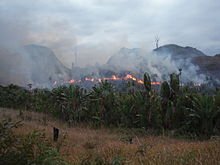
Slash-burn method in Madagascar
Slash and burn methods also damage the soil carbon compositions. Fire removes soil cover which contains most of the soil organic carbon while other activities like tillage exposes the soil for oxidation.
The study quantifies the carbon changes across the tropical rainforests of Asia, Africa and South America.
Using 12 years (2003-2014) of satellite imagery, laser remote sensing technology and field measurements, the researchers discovered something that is very alarming. The tropics are now the source of at least 425 teragrams of carbon( 425.2 ± 92.0 Tg C yr–1) annually that is more than the annual emissions of all the petroleum powered vehicles in the United States. This value is acquired by comparing the total carbon gain and loss in the tropics, the rainforests net release of carbon is 862 teragrams(861.7 ± 80.2 Tg C yr–1) and the gain(captured) is only at 437 teragrams(436.5 ± 31.0 Tg C yr–1).
Performing a fast computation where gained(captured) carbon is positive and released carbon is negative,
Net carbon = Net carbon loss + Net carbon gain
= -862Tg + 437 Tg
= -425 Tg(425 Tg carbon is released).
I performed the computations below based on the given percentages to further break down the net carbon allocation for each continent
Net carbon loss and gain:
South America(Amazon)
Loss: 60% Gain: 43%
Net carbon= 0.60(-862 Tg) + 0.43(437 Tg)
= -517.2 Tg + 187.91 Tg
= -329.29 Tg
Africa:
Loss: 24% Gain: 30%
Net carbon= 0.24(-862 Tg) + 0.30(437 Tg)
= -206.88 Tg + 131.1 Tg
= -75.78 Tg
Asia:
Loss: 16% Gain: 26%
Net carbon= 0.16(-862 Tg) + 0.26(437 Tg)
= -137.92 Tg +113.62Tg
= -24.3 Tg
Net loss total = -329.29 + -75.78 + -24.3
= -429.37 Tg
There is close to 1% difference of our computed data(429 Tg) compared to the researched(425 Tg) because the percentages that we used is not exact. The important thing is we now have a general idea of how much each continent's rainforests contribute to the carbon loss. Based on these figures we came to a conclusion that ALL rainforests(per continent) are now carbon sources. We can also see that South American rainforests particularly the Amazon release 3 times as much as the combined carbon emissions of African and Asian rainforests.
What is the impact of rainforests as an additional carbon source?
The planet's annual carbon emissions is estimated to be close to 11000 Tg. An additional 862 Tg means an increase of almost 8%. This is not a small number. This figures show the need for a more aggressive approach in the issue of climate change.
Recalling the discussion earlier as to why CO2 is main culprit of climate change/global warming, it is discussed that CO2 accumulates in the atmosphere for a very long time. If we couldn't find a solution an additional 8% will be accumulating annually.
Another reason how an additional 8% of carbon(in CO2 form) would affect our planet is its contribution to radiative forcing, particularly its influence to the value of the change in equilibrium of the planet's surface air temperature(ΔTs). Due to an additional 8% the value of ΔTs will be positively larger indicating a much warmer surface air temperature. In short the planet will become warmer.
How can we change back the role of rainforests as carbon sink?
The planet do not actually need additional solutions to solve the rainforests issue. The methods are already there, what we need to do is strict implementations of these methods.

• Aggressive approach on reforestation. Heavier punishments for illegal loggers and wildlife traders. Strictly monitoring the mining industry.

• Put a price on carbon and strictly monitor it, let the big guys pay for their bills.

• Information and appreciation. Almost all high school students in the world are aware of global warming. Aside from passing that environmental science quiz, do they really care? A few maybe. What we as parents, brothers, educators etc. need to do is not tell them the issue, what we need to do is SHOW it to them. Let them see and appreciate the value of the environment. Some years later we'll be surprise by their actions. Imagine if we could educated all high school students in the world, those numbers are in hundreds of millions. We do not know but it might be the real game changer in this issue.
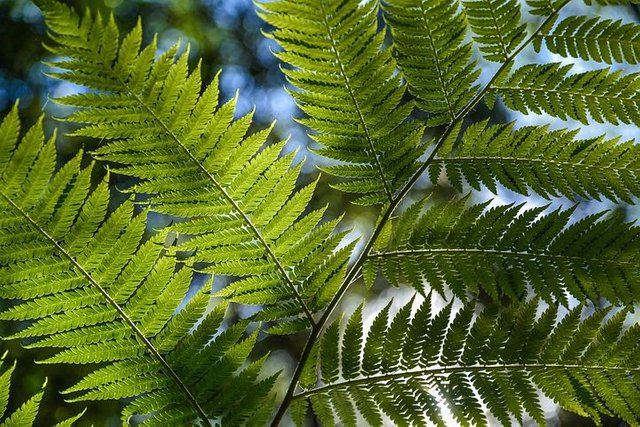
Conclusion:
In this article we learned the reason why carbon dioxide is the most influential GHG in climate change; it has the highest RF values and it 'sticks around'. We also learned the use and importance of carbon sinks in controlling the CO2 levels. And the most important of all is that we became aware that the rainforests which before act as global coolers have now become one of the largest carbon sources of the planet. It might be an exaggeration but I think this is far the loudest wake up call for humanity. We might live in comfort and security until the end of our lives, but how about our children? our grandchildren? the following generations?
We must act now.
To you who read until these very last sentences, thank you very much! Good luck to us and to our planet :D
Credits:
[Union of Concerned Scientists]:
ucsusa.org
[Science Daily]:
science daily.com
Journal Reference:
A. Baccini, W. Walker, L. Carvalho, M. Farina, D. Sulla-Menashe, R. A. Houghton. Tropical forests are a net carbon source based on aboveground measurements of gain and loss. Science, 2017 DOI: 10.1126/science.aam5962
Wikipedia:
Carbon_sink
Radiative_forcing
Soil_carbon
Climate_sensitivity
Carbon_sequestration
ALL IMAGES NOT CREDITED ARE FROM PUBLIC DOMAIN
ALL DIAGRAMS, GRAPHS and CHARTS ARE TAKEN FROM WIKIMEDIA COMMONS
bakit may math??!!! Bakit?!!
rip english kasi bro kaya dinaan nlng sa konting math. Hehe
Very scientific with mathematics facts. I understood nil
Thank you for dropping by. :)
@originalworks
The @OriginalWorks bot has determined this post by @lordkingpotato to be original material and upvoted it!
To call @OriginalWorks, simply reply to any post with @originalworks or !originalworks in your message!
To enter this post into the daily RESTEEM contest, upvote this comment! The user with the most upvotes on their @OriginalWorks comment will win!
For more information, Click Here! || Click here to participate in the @OriginalWorks writing contest!
Special thanks to @reggaemuffin for being a supporter! Vote him as a witness to help make Steemit a better place!
Thanks @blackjelly13. I just want to share what Mr.Baccini and his team discovered. I think major credit for this post should also be attributed to them. Anyway, thanks again for much appreciation.
thanks for such a comprehensive article.
This is very well explained. A bit long, but easy to follow! I hope this will be read by some climate change deniers so that they could learn something...
Thank you very much sir for dropping by. I also hope that this article will help those people(even only one) to understand that its not just numbers, it's really happening.
This is incredible! @lordkingpotato
Thank you much @fantasticmonkey. I love your name it sounds super fantastic! Hehe.
Useful and informative. Nice layout too. :)
Maraming salamat po sa pagtambay! Haha. Jk. Thank you very much ate for the compliment.
From someone who is working in DENR under its line bureau which is Mines and Geosciences Burewu, I definitely agree with you. What we can do now on these irreparable damage to nature is to mitigate its effects. I hope studies will be conducted to help Mother Nature get well.
I am also with you in a strict implementation of environmental laws.
Yay. Thank you very much gail for dropping by! I also have some friends in DENR QC and 4A I don't know the name of their bureau but I think its forestry related. I'm really flattered that a person from our government appreciates my post. I salute to you guys in the DENR!:D
You are welcome @lordkingpotato. I actually left the bureau for personal reasons but I am still into preserving mother nature. Kudos dear. Let us make the world a better place.
@royrodgers has voted on behalf of @minnowpond. If you would like to recieve upvotes from minnowpond on all your posts, simply FOLLOW @minnowpond. To be Resteemed to 4k+ followers and upvoted heavier send 0.25SBD to @minnowpond with your posts url as the memo
@minnowpond1 has voted on behalf of @minnowpond. If you would like to recieve upvotes from minnowpond on all your posts, simply FOLLOW @minnowpond. To be Resteemed to 4k+ followers and upvoted heavier send 0.25SBD to @minnowpond with your posts url as the memo